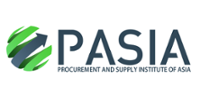Where
PASIA Training Center
10th Floor, DPC Place Building, 2322, Chino Roces Avenue, Makati, 1231 Metro Manila
Makati, Philippines
Event Details
Transportation moves goods and services across geographic lines, between where products are produced and where they are consumed, while allowing for competitive growth. At home and abroad, advances in transportation through technology and design have broadened the markets for both domestic and international competition. The wider a product's distribution and the greater its demand, the more manufacturers can leverage transportation's economies of cost. Logistics professionals are responsible for moving inventory throughout the firm's supply chain and to the firm's customers. They can use a combination of private and purchased transportation services with access to various modes of transportation, offering flexible solutions for transporting product from origin to destination.
SESSION 1: Transportation Fundamentals
SESSION 2: Modes of Transportation
SESSION 3: Transportation Management
GLOBAL LOGISTICS CONSIDERATIONS
For the global logistics manager, successful participation in international trade requires awareness and knowledge of a number of key components, including but not limited to (1) The infrastructure and systems of the countries to which it will export goods (2) The regulations which govern each country that its shipments will travel through (3) The customs clearing and documentation requirements for each shipment as dictated by each country and transportation mode used (4) An understanding of how it can reach mutual agreement on the terms of sale, methods of payment and finance terms trade participants; and (5) The process of determining the currency to be used for payment, transfer pricing and potential understanding of how free/foreign trade zones influences duties paid and total landed costs. Coordinating these international trade elements is an essential skill set for today's logistics professionals.
SESSION 1: Infrastructure and Systems
SESSION 2: Regulations
SESSION 3: Customs Clearing and Documentation
SESSION 4: Finance and Payment Option
SESSION 5: Currency and Tax Considerations
LOGISTICS NETWORK DESIGN
The design of the network of warehouses and transportation lanes enable supply to be provided at the place and time of demand most effectively. This involves choosing the optimal number, location, and type of warehouse facilities, which can be supported by using both manual and automated decision support tools. Risk management helps logistics professionals determine how they can help minimize uncertainty and provide more reliable organizational results.
SESSION 1: Facilities Planning and Network Design
SESSION 2: Risk Management
REVERSE LOGISTICS AND SUSTAINABILITY
Companies around the globe use reverse logistics to manage their product returns in ways that actually turn the reverse flows into quantifiable value streams that not only contribute to the profitability of the organization, but also strengthen its triple bottom line (TBL) and its commitment to sustainability and social responsibility. These efforts make the organization more attractive to customers, suppliers, other supply chain participants, and to shareholders who value green initiatives, reduced carbon footprints and wiser usage of the world's finite resources.
SESSION 1: Reverse Logistics
SESSION 2: Sustainability
WHO SHOULD ATTEND?
• Logistics Managers
• Logistics Planners
• Logistics Specialist
• Distribution Managers
• Traffic Analyst
• Fleet Managers
Event Details
Speakers

Charlie Villasenor
Chairman and CEO of Procurement and Supply Institute of Asia
